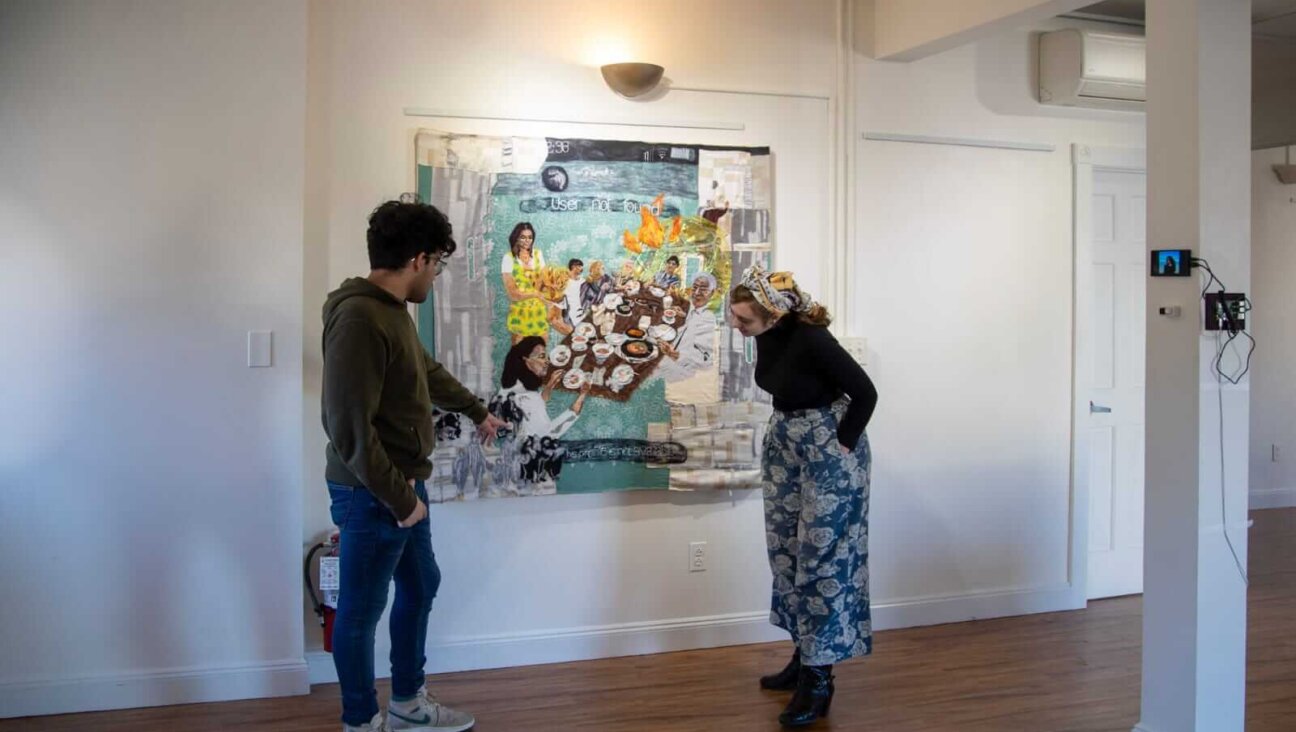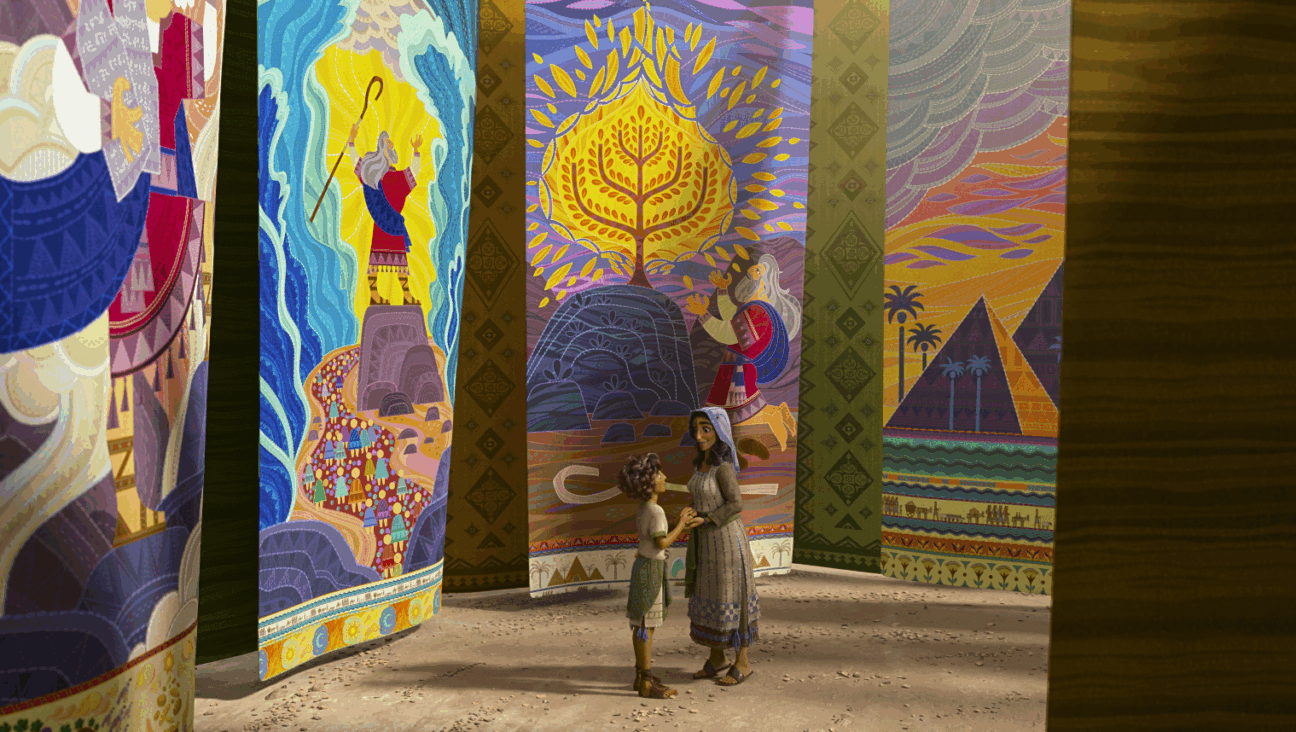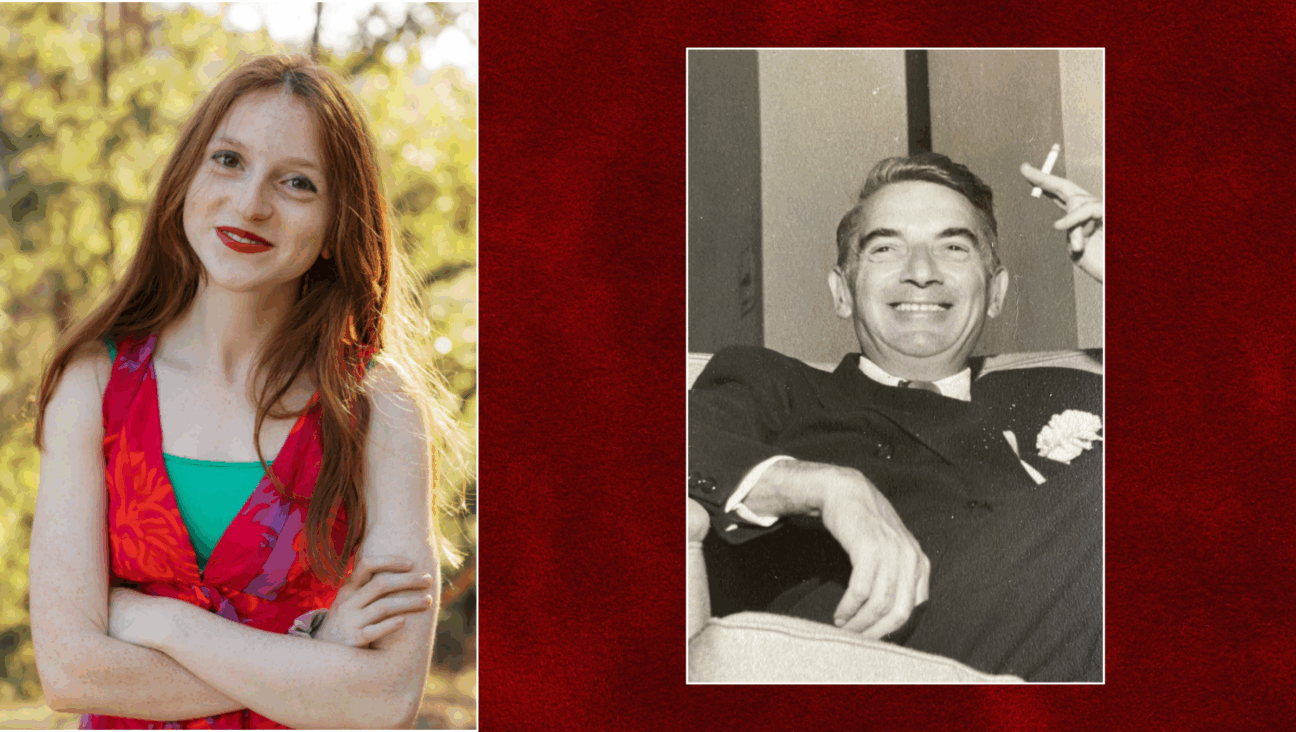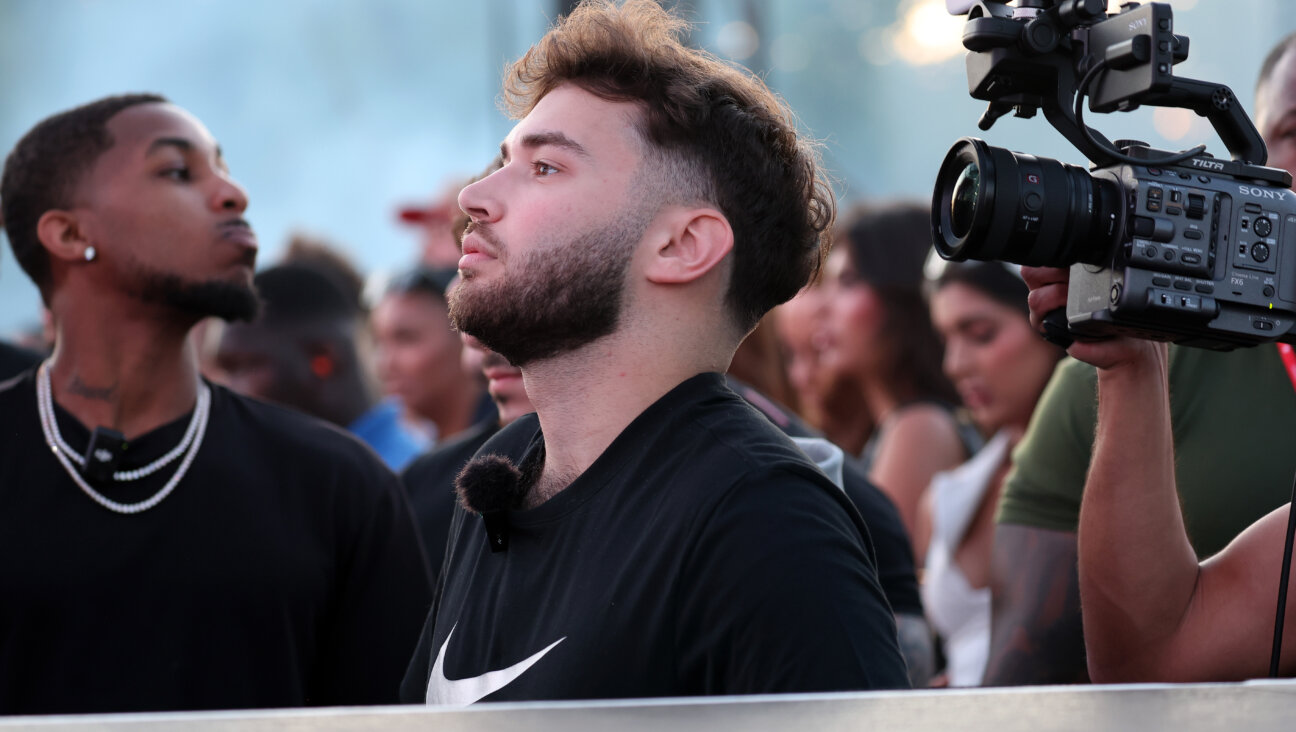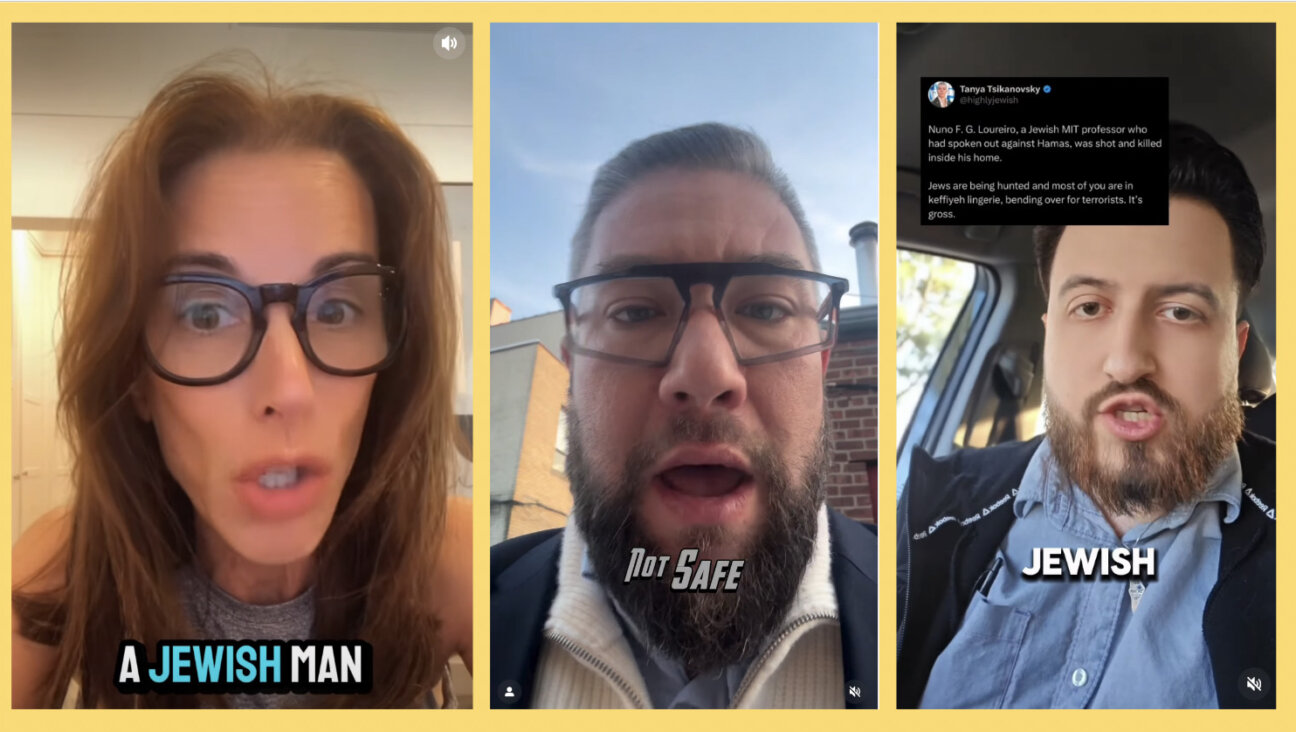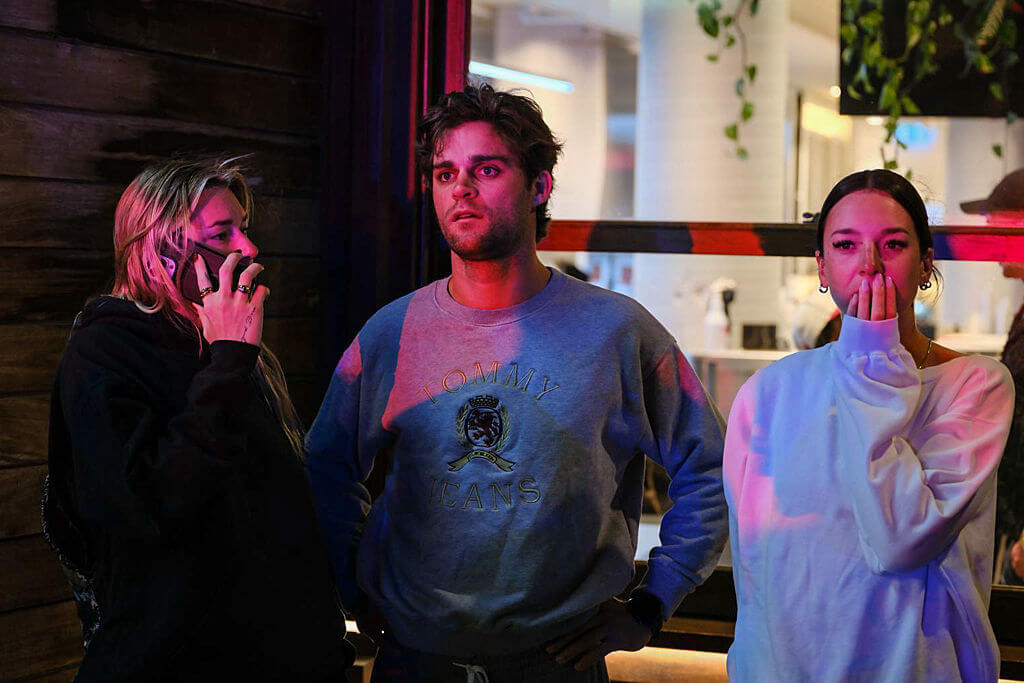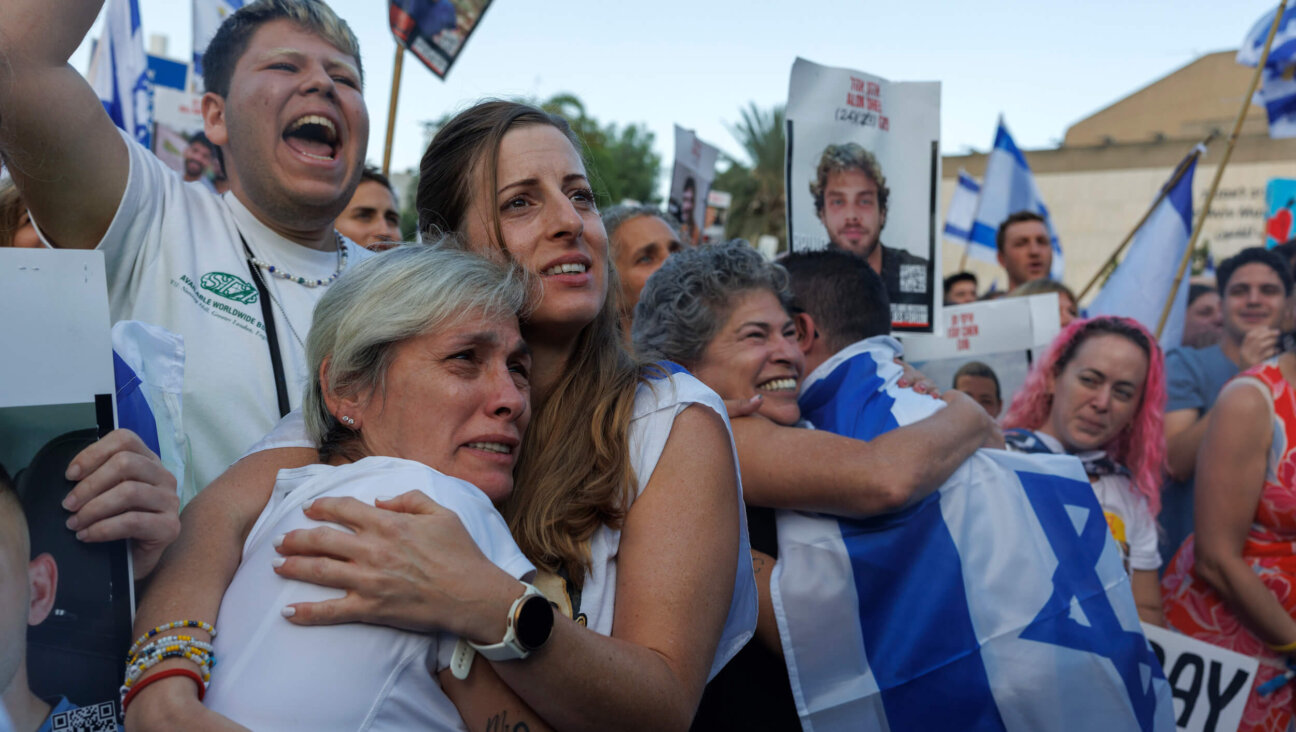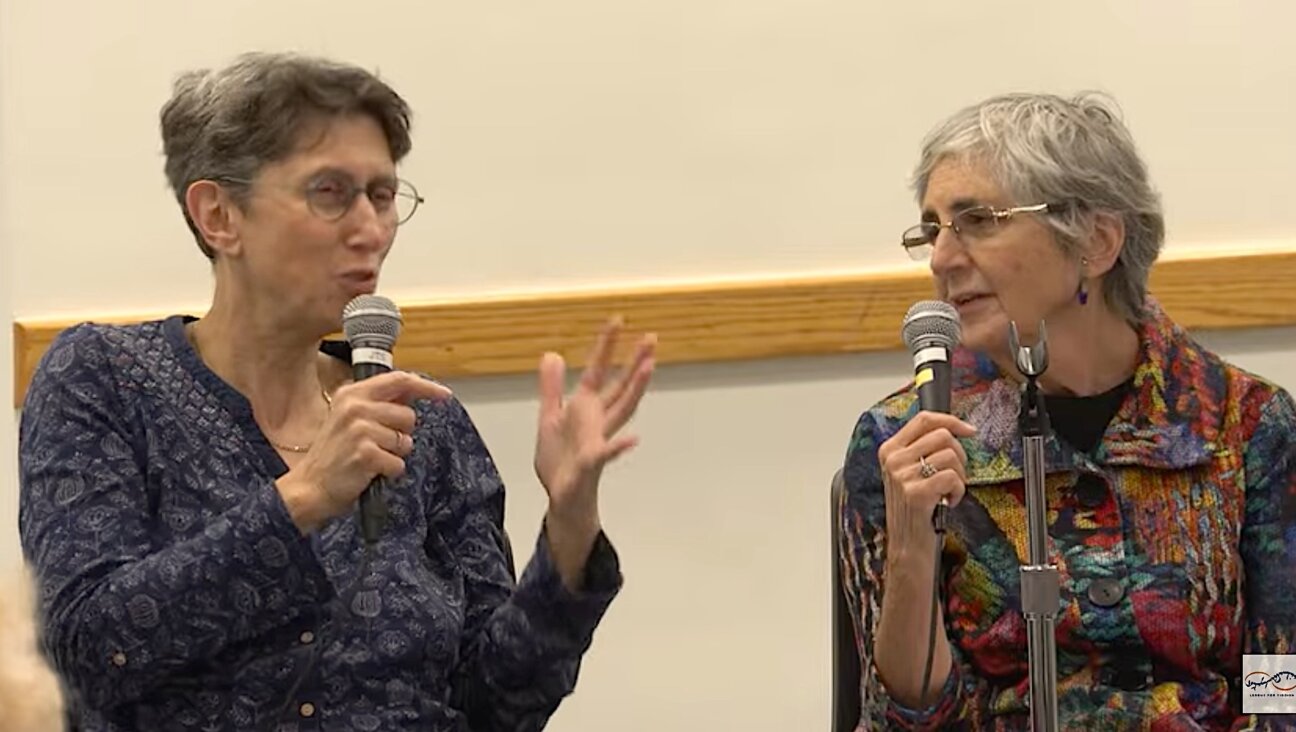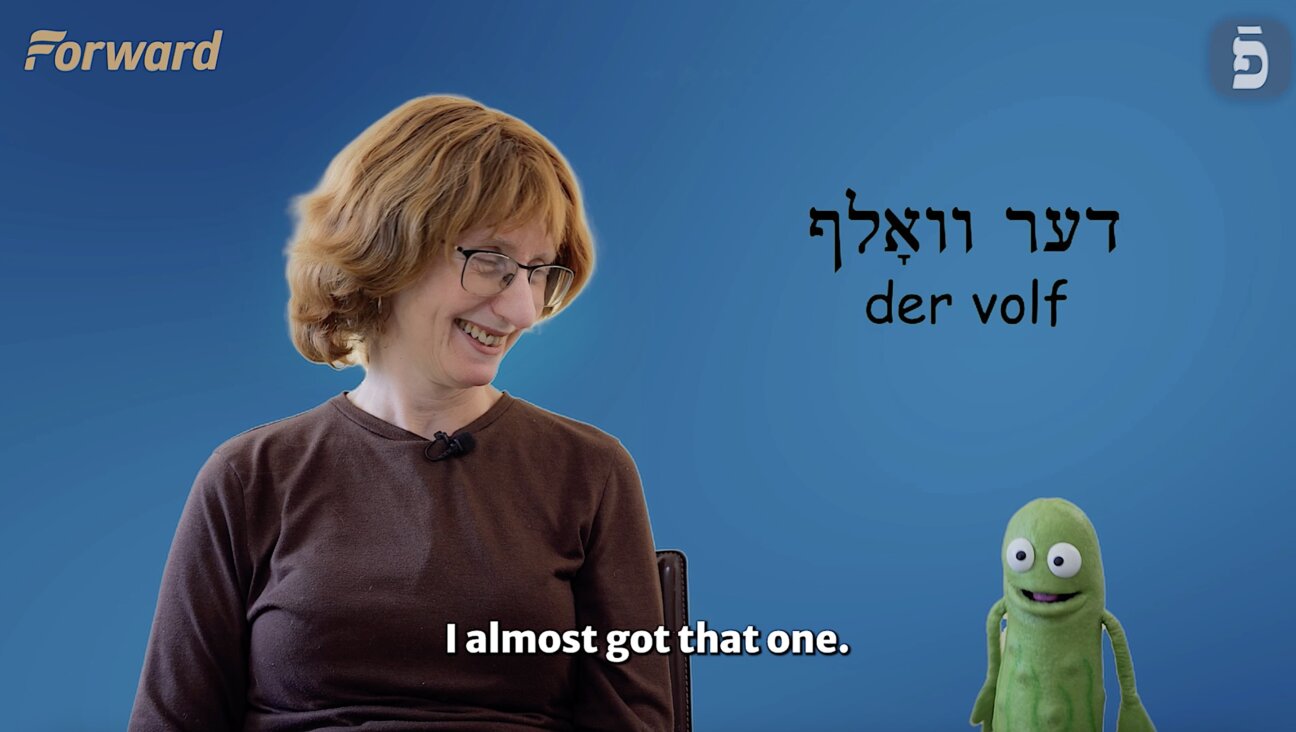Honoring Rabbi Arthur Waskow – activist, pioneer and prophet
The progressive Jewish leader fused radical activism with transformative spirituality
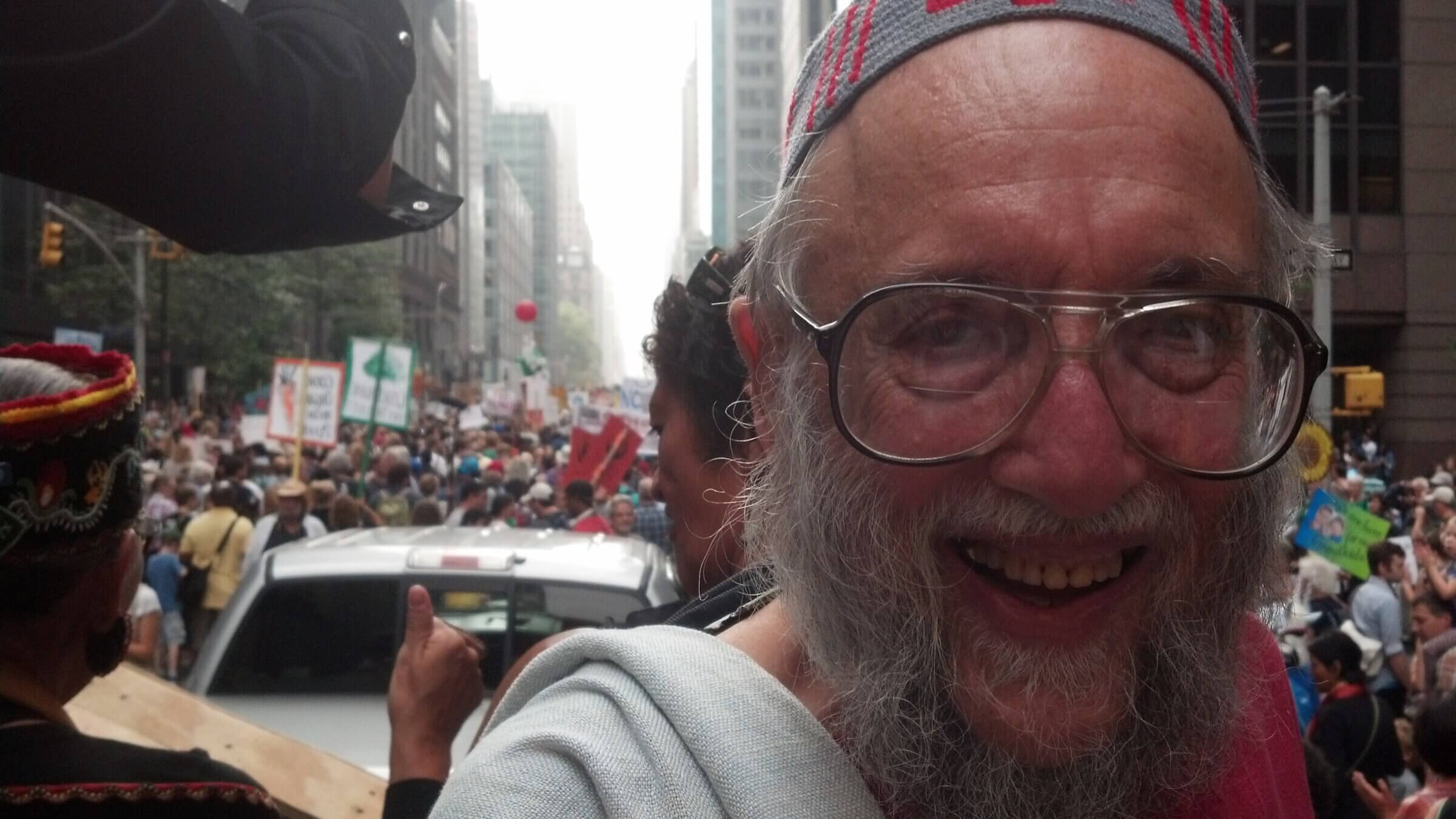
Rabbi Arthur Waskow at the 2014 Climate March in New York City. Photo by Jay Michaelson
At the 2014 Climate March in New York City, Rabbi Arthur Waskow, who passed away Monday at the venerable age of 92, rode atop a makeshift Noah’s Ark. The float was constructed by Auburn Seminary and a coalition of faith organizations to highlight the deep connections between religious values and environmentalism. I was honored to be on that ark alongside him, and, looking out on the throngs of marchers, I snapped a photo and showed it to him. “The Rebbe and his legacy,” I said.
“What legacy?!” Reb Arthur responded, then a spry 80 years of age. “I’m still right here!”
This was Rabbi Arthur Waskow: prophetic, wise, cranky, witty, insightful, and decades ahead of his time. Like his contemporaries who have also recently left us — Rabbi Michael Lerner, for example — Reb Arthur (as his students called him) transformed how Jews understand themselves and their religion’s relationship to political engagement.
To an inner circle of Jewish social justice activists and Jewish Renewalniks, Rabbi Waskow was indeed one of our rebbes. Together with his wife Phyllis Berman, he co-created a form of Jewish spirituality and consciousness that wove together progressive, even radical, political engagement with ritual and liturgical innovation. Paraphrasing what was once said about the Velvet Underground, there weren’t a lot of people in this inner circle, but all of them went on to become spiritual leaders and activists too.
But Reb Arthur’s legacy extends far beyond his fans to hundreds of thousands of Jews who don’t even know they’ve been influenced by him.
In 1969, Waskow created the “Freedom Seder,” a new version of the Passover Haggadah that, in his words, “connected the Jewish exodus from Egypt with the struggle for Civil Rights in America and Social Justice around the world.” This may seem banal today, but in 1969, it was unheard-of. While there were plenty of radicals, hippies and artists who were Jewish (Abbie Hoffman, Jerry Rubin, Allen Ginsberg, the list goes on and on), few embraced Judaism as such, as a religious and communal tradition with something worthwhile to teach. Meanwhile, while we’ve all seen that photo of Abraham Joshua Heschel marching with Rev. Dr. Martin Luther King, Jr., in fact large segments of the Jewish community were antagonistic to antiwar activism, civil rights activism, and the array of left-wing political causes that animated that period known as the Sixties.
Rabbi Waskow brought these threads together. Well before doing so became a buzzword, Waskow made Judaism newly relevant to a generation of young American Jews. He created new rituals on old foundations, and breathed new life into old words. Just consider his book titles: The Bush is Burning! Radical Judaism faces the pharaohs of the modern superstate; Godwrestling; or one of his newest, Handbook for Heretics and Prophets: A New Torah for a New World. (Those are only three of twelve, I hasten to add.)
This work continued for decades, through the Shalom Center, which Waskow founded, and later in ALEPH: The Alliance for Jewish Renewal, which, for a while anyway, brought together Waskow’s political radicalism with the emergent spirituality of Rabbi Zalman Schachter-Shalomi and others.
Truthfully, though, there was always a tension — often productive, sometimes less so — between these two directions. (Waskow may have coined the phrase ‘Jewish Renewal’ in a 1979, but there are different versions of that story.) Reb Arthur had little interest in meditation and mysticism; his was, in the words of another book title, a down-to-earth Judaism. He loved Jewish ritual, wrote a book about Jewish holidays, and, with Berman, proposed to transform Jewish languages of prayer and of God. Yet he had little patience when contemplative practice turned too inward, or turned away from the problems of justice toward mystical or theological speculation.
Conversely, Waskow’s radicalism often chafed against the sensibilities of many Jews. He was a left-wing activist long before he was a Jewish spiritual leader, and was outspoken from beginning to end. The Freedom Seder cited not only Gandhi and King, but Nat Turner and Eldridge Cleaver; it was published in the leftist Ramparts magazine; it was first hosted by the left-wing Jews for Urban Justice. His was not a polite liberalism.
One remarkable example: In 1969, Waskow delivered a Yom Kippur sermon at Washington’s Tifereth Israel synagogue demanding that congregants confess and atone for “paying soldiers to burn Vietnamese babies alive… supporting a system of grocery stores that starve some children into apathy and death… paying and applauding policemen who gas, shoot and beat Black people…” and many other sins. The response was just what you’d expect: in the words of one account, “a burst of indignation” from attendees who said he should focus more on issues that affect Jews. Ours is not the first time in which the Jewish Establishment has disowned and demonized Jewish Leftists.
And while Waskow may have mellowed somewhat with age, he didn’t mellow that much. In later years, he was excoriated for his criticisms of Israel’s actions in Lebanon and in the Occupied Territories; his peace work with Christian and Muslim leaders; and his opposition to the ADL and defense of the so-called ‘Ground Zero Mosque.’ Waskow was not always shaking his fist at the sky; after all, yet another of his books is called Seasons of our Joy. But he lived his life as a prophet, and prophets are rarely popular in their times — just ask Jeremiah.
Still, Waskow’s legacy — now I can use the term — runs deep and wide. He helped create Jewish environmentalism; if your synagogue is reducing its carbon footprint, in part it has Reb Arthur to thank (though he would be the first to say that such steps are pointless without collective political action). He and Berman transformed Jewish liturgy in ways that rippled out well beyond progressive communities. And broadly speaking, Reb Arthur pioneered the entire notion that social activism and Jewish spirituality — not only Jewish identity and moral teaching, but also Jewish ritual and text and myth — enrich one another.
These teachings are still prophetic today. So, as Reb Arthur would surely insist, I will give him the last words, taken from the Dayenu liturgy in the original 1969 Freedom Seder:
The struggles for freedom that remain will be more dark and difficult than any we have met so far. For we must struggle for a freedom that enfolds stern justice, stern bravery, and stern love. Blessed art thou, O Lord our God! who hast confronted us with the necessity of choice and of creating our own book of thy Law. How many and how hard are the choices and the tasks the Almighty has set before us!
For if we were to end a single genocide but not to stop the other wars that kill men and women as we sit here, it would not be sufficient;
If we were to end those bloody wars but not disarm the nations of the weapons that could destroy all mankind, it would not be sufficient;
If we were to disarm the nations but not to end the brutality with which the police attack black people in some countries, brown people in others; Moslems in some countries, Hindus in other; Baptists in some countries, atheists in others; Communists in some countries, conservatives in others, it would not be sufficient;
If we were to end outright police brutality but not prevent some people from wallowing in luxury while others starved, it would not be sufficient;
If we were to make sure that no one starved but were not to free the daring poets from their jails, it would not be sufficient;
If we were to free the poets from their jails but to train the minds of people so that they could not understand the poets, it would not be sufficient;
If we educated all men and women to understand the free creative poets but forbade them to explore their own inner ecstasies, it would not be sufficient;
If we allowed men and women to explore their inner ecstasies but would not allow them to love one another and share in the human fraternity, it would not be sufficient.
How much then are we in duty bound to struggle, work, share, give, think, plan, feel, organize, sit-in, speak out, hope, and be on behalf of Mankind!


